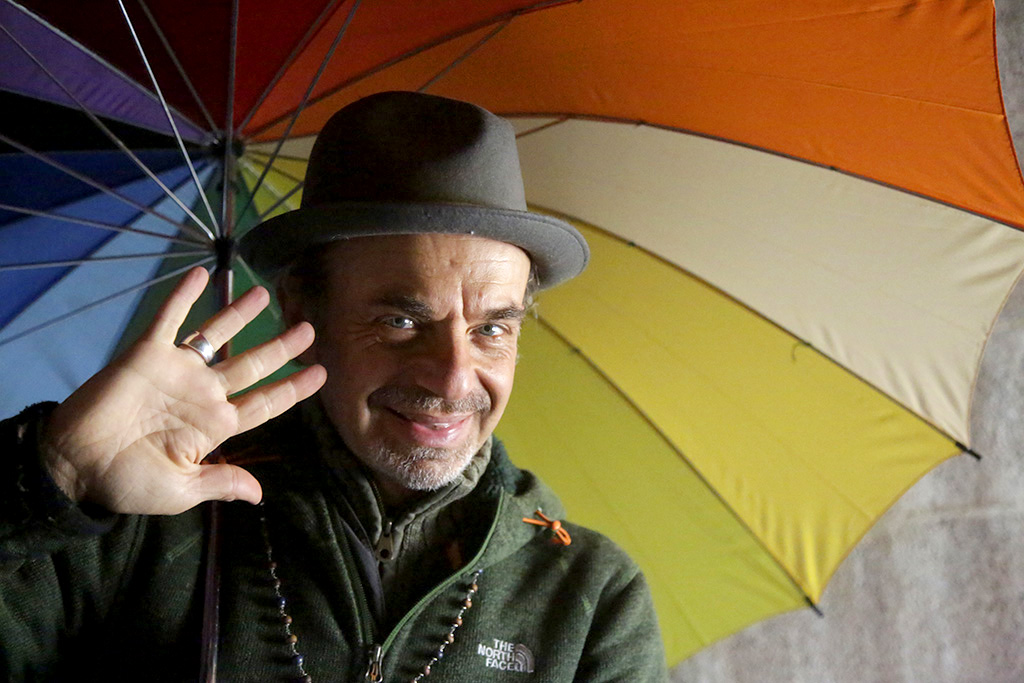Andrea Boni
Andrea is a dedicated meditation practitioner of over forty years and a meditation teacher for over twenty. Through Teacher Trainings, yoga Immersions, and workshops, he teaches globally to students of all levels.
Through his intimate contact with the internal realm he engages with his students and the world powerfully, effectively and with great love. In 1989 he received his Master’s degree cum laude in Modern Literature and Performing Arts and his master thesis was published among the ten most interesting thesis of the year. He worked in the film and television industry in close collaboration with luminaries such as Michelangelo Antonioni, Wim Wenders and George Lucas. He himself has directed documentary films for RAI television and international NGOs.
Since 2010 he is an Anusara®Yoga Certified Teacher and currently a member of Yoga Alliance and Yani, Yoga Associazione Nazionale Insegnanti.
Andrea Boni è un insegnante certificato di Anusara® Yoga, membro Yoga Alliance e Yani. Pratica la meditazione dal 1976 e la insegna da oltre vent’anni in Teacher Training, Immersion e workshop in Italia e all’estero a studenti di tutti i livelli. Si laurea cum laude nel 1989 in Lettere Moderne con indirizzo storico teatrale e la sua tesi è pubblicata tra le dieci più interessanti di quell’anno. Lavora nel cinema e nella televisione accanto a registi come Michelangelo Antonioni, Wim Wenders e George Lucas, divenendo poi lui stesso regista di documentari per la RAI e per ONG internazionali. La sua conoscenza delle scritture dell’India e dello yoga, mista a esperienze affascinanti tratte dalla sua carriera nello spettacolo, rendono i suoi insegnamenti vivi e facilmente fruibili da tutti. Da qualche anno è parte del corpo insegnanti di European Yogi Nomads – uno dei fenomeni più moderni per la diffusione dello yoga nelle capitali dell’Unione Europea.
Philosophy
In the asana practice we are faced with our bodies and the emotions that arise naturally, thus celebrating the uniqueness and diversity of artistic expression through movement. The practice is a balance between forces. It means recognizing not only our points of weakness but also the explosion of grace, which is happening in some other place within us at the same time. Each asana is an opportunity to enact our personal self study and concurrently communicate in a creative manner with our bodies.
Who are we? What are we? What is our relationship with the world? Alignment technique is an important aspect of the practice. So is poetic expression, which is intrinsic to every pose. In it, the body loses the awareness of separation between itself and the space around it, fusing itself back with its true nature, which is silence and expressive joy. In this way, the poses act as a vehicle that brings subtle changes to our awareness. For example, forward-bends feed the sensation of surrendering and offering oneself. Back-bends speak to us of new horizons full of treasures. Each one of our senses is a doorway to experiencing the heart.
❤
Everything becomes gentle and truthful in meditation because we are reminded of the simplicity of every small gesture. We need nothing more than ourselves to practice. Initially, we may feel we need to apply the same amount of “perfectionism” as we implement in our daily life, or that has been taught to us. The truth is the opposite. In meditation we learn to drop the superfluous, beginning with the idea of being the protagonist of the game we are playing.
When we close our eyes to the outside world, we realize there is much more than is revealed to our gaze. Like silence that contains all sounds, some expressed and some that simply rest somewhere without exposing themselves. And gradually we begin to fall in love with meditation as we did with our first love.
Filosofia
Nella pratica di asana noi ci confrontiamo con il corpo e con i sentimenti che nascono liberamente, celebrando così la diversità e l’unicità dell’espressione artistica nel movimento. La pratica è equilibrio tra le forze. Significa riconoscere i nostri punti di debolezza ma anche l’esplosione di grazia che sta avvenendo contemporaneamente da qualche altra parte all’interno di noi. Ogni posizione è un’opportunità per mettere in atto il nostro studio personale e al tempo stesso comunicare con il corpo in maniera creativa. Chi siamo? Che cosa siamo? In che rapporto siamo con il mondo?
La tecnica dell’asana, eseguita con allineamenti precisi, è un aspetto importante della pratica. Un altro è l’espressione poetica, che è intrinseca a ciascuna posizione. Qui il corpo perde la distinzione netta tra sé e lo spazio che lo circonda, ritornando a fondersi con la sua vera natura che è silenzio e gioia espressiva. Così le posizioni sono veicoli che conducono a sottili cambiamenti nella nostra consapevolezza. Ad esempio, i piegamenti in avanti possono aprirci al sentimento dell’abbandono e del donarci. I piegamenti indietro ci parlano di nuovi orizzonti carichi di tesori. Ognuno dei nostri sensi è una porta d’accesso all’esperienza del cuore.
❤
La meditazione rende tutto gentile e vero perché fa rivivere la semplicità dei piccoli gesti. Quando la pratichiamo, non ci serve molto altro che noi stessi. Le prime volte, ci sembra di dover applicare lo stesso grado di “perfezionismo” che mettiamo in atto nella vita quotidiana, o che ci è stato insegnato. In verità è proprio l’opposto. In meditazione noi impariamo a lasciar cadere l’eccedenza di tutto, per prima cosa l’idea di essere i protagonisti del gioco che stiamo giocando.
Quando chiudiamo gli occhi al mondo esterno, ci accorgiamo che c’è molto di più di ciò che si manifesta sul telone dello sguardo. C’è la vita generosa del silenzio che contiene tutti i suoni, quelli espressi e quelli che ancora giacciono da qualche parte senza mostrarsi. E gradualmente ce ne innamoriamo come facemmo con il primo amore.




